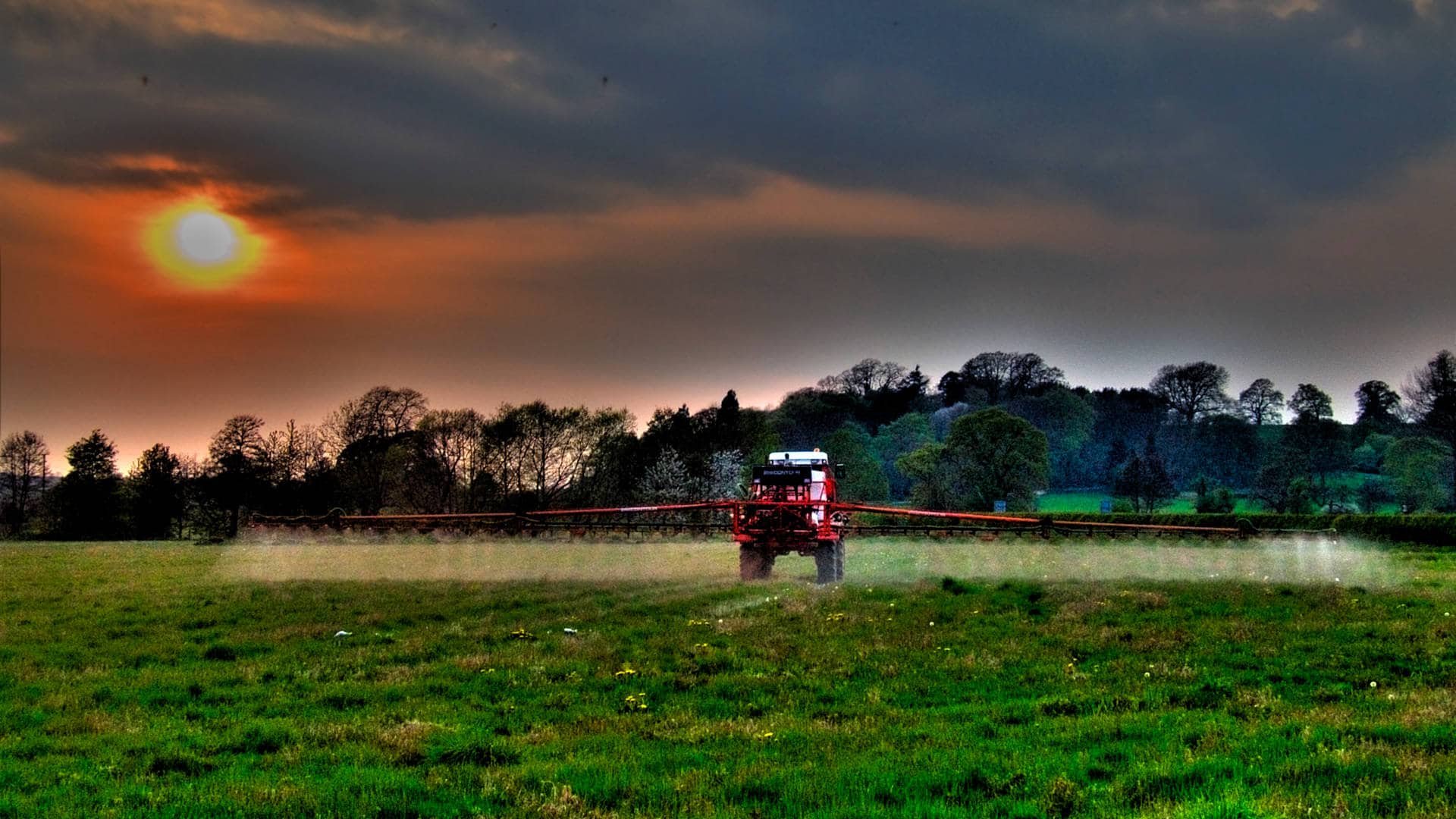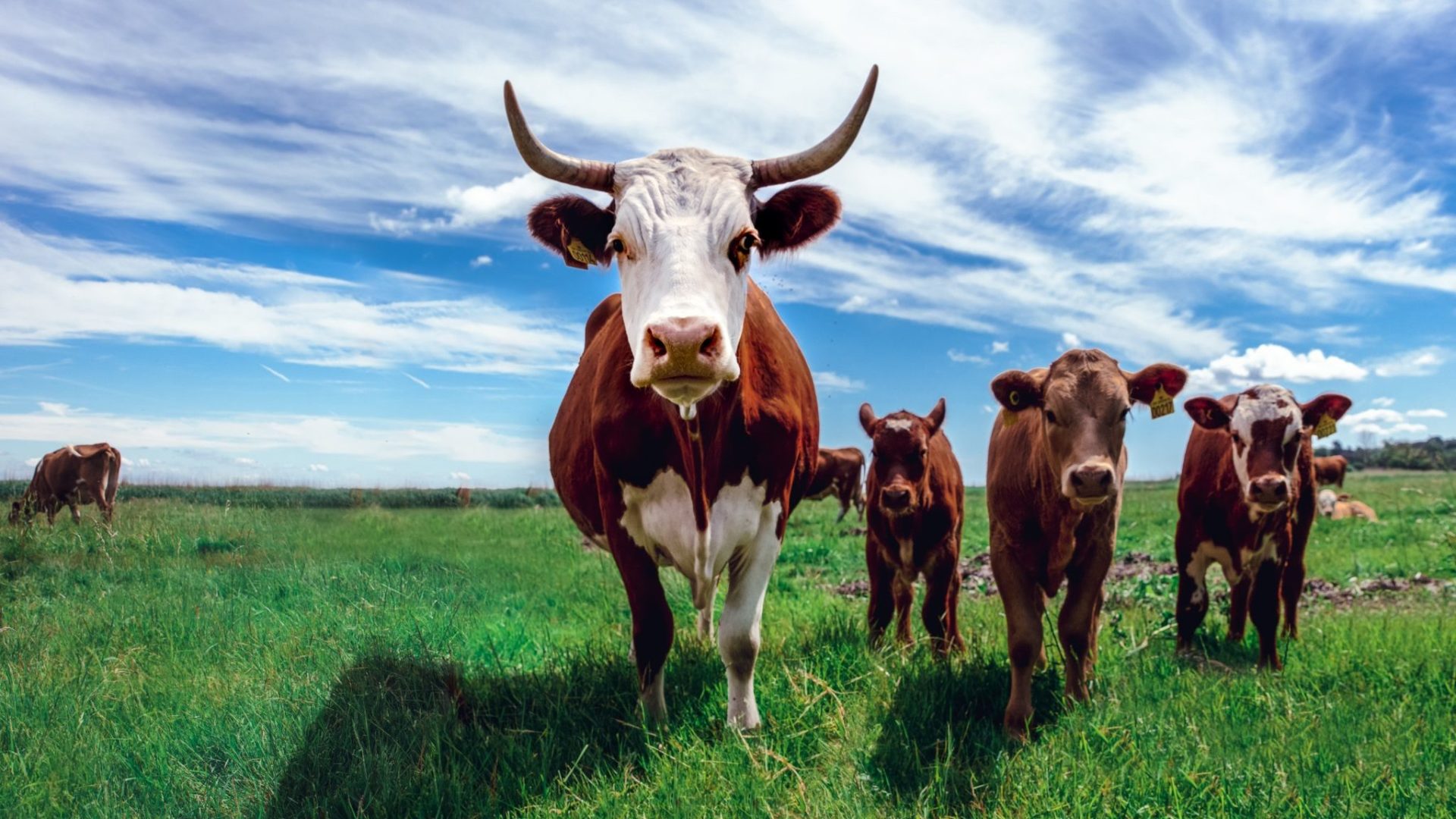Will Rising Temperatures Make Superweeds Even Stronger?
Around 10 years ago, in the fierce heat of the Kansas summer, many of the noxious kochia weeds invading Phillip Stahlman’s research fields simply wouldn’t budge when sprayed with a mixture of two widely used herbicides, glyphosate and dicamba. Just a few months earlier, in the cooler spring weather, the herbicide mixture had easily triggered the weed’s small thin leaves to curl up and turn brown, signaling the plant’s demise.
Now the stalwart weed had Stahlman stumped. Stahlman, then a weed scientist at Kansas State University, had never encountered this problem with herbicides before. He initially assumed that he had applied the agrichemicals incorrectly. But year after year, the same thing happened. Stahlman knew something was up. He kept a close watch on the weeds in his fields. He also conferred with local farmers who reported seeing similar problems. “The light didn’t come on for a while until the issue kept reoccurring. It was like putting together a puzzle,” says Stahlman.
Eventually, Stahlman, who has since retired, decided that the problem was likely temperature: Something about spraying in high heat was rendering the herbicides less effective.
Stahlman is not alone in making this observation. Today, mounting evidence suggests that temperatures of around 90 degrees Fahrenheit or above can make some herbicide-resistant weeds even more resistant, and cause other weeds to be less sensitive to certain chemicals.
Some farmers say they know high temperatures can mess with some herbicides, so they try to avoid spraying in the heat of the day. “A good rule of thumb is if it’s 85 to 90 degrees Fahrenheit, just don’t spray,” says Curt Gottschalk, a farm manager in Hays, Kansas.
Not all experts agree that this pattern, largely demonstrated in lab experiments, poses a problem for farmers. And some herbicides appear to work even better at high temperatures. But if heat is boosting many weeds’ resistance to major herbicides, the implications could be significant. Left unchecked, weeds can devastate harvests and income — if farmers didn’t make an effort to control weeds, they could wipe out around half of all corn and soybean yields across the U.S and Canada, according to the Weed Science Society of America, a nonprofit society of academic and industry scientists. The loss could cost farmers around $43 billion annually.
Farmers are already battling against epidemics of weeds that have developed genetic resistance to multiple herbicides, including glyphosate and dicamba. Stahlman and other weed researchers argue that temperature could be an overlooked second factor strengthening weeds’ defenses against herbicides. Although most farmers now understand that temperature affects herbicides, to the untrained eye it could look just like herbicide resistance, Stahlman says.
These researchers also fear the issue could worsen in the future as climate change raises temperatures and extreme weather events, including heat waves, become more frequent.
“We already know that herbicide resistance is the most problematic issue in chemical weed control,” Maor Matzrafi, a weed scientist at Israel’s national Agricultural Research Organization, wrote in an email to Undark. “Maybe reduced sensitivity due to climate change is next in line.”
Farmers used to rely less on herbicides, instead controlling weeds using laborious methods such as tilling and manual removal. But, starting in the mid-1990s, biotechnology companies began debuting genetically modified crops that were resistant to common, powerful herbicides. The new seeds allowed farmers to liberally spray their fields with agrochemicals to kill weeds while their GM crop flourished. The technology made most manual weeding unnecessary, and herbicide use surged globally. But weeds evolved in response, and herbicide resistant varieties emerged. That has set off a new battle between farmers and weeds, with farmers increasingly using combinations of chemicals, as well as additional doses, to try to knock off weeds.
After Stahlman’s experience with kochia weeds, though, he began to examine whether temperature could be affecting herbicide performance more than was widely recognized. (Stahlman, like many academic weed scientists, has received research funding from agrochemical companies in the past.)
To decipher how heat helps weeds fend off herbicides, Stahlman teamed up with KSU colleagues Mithila Jugulam, a weed physiologist, and Junjun Ou, a research assistant. The team grew seedlings from kochia populations that originated in Kansas, in chambers kept at temperatures ranging from 63.5 to 90.5 degrees Fahrenheit — representative of the state’s spring and summer daytime heat. The temperature in the chambers dropped every 12 hours to mimic cooler nighttimes. When the seedlings reached around 4 inches high, the researchers dosed some with glyphosate and others with dicamba. At weekly intervals, the team examined the weeds for signs of injury. After one month, they cut down the weeds and dried and weighed them.
The team found that, at high temperatures, they needed more than twice the amount of glyphosate and dicamba to control weeds. They published their results in 2016.
To understand why heat reduced sensitivity, the researchers tracked the herbicides’ paths through the weeds using mildly radioactive versions of glyphosate and dicamba. The former previously manufactured by Monsanto, and the latter produced by BASF Corp. (BASF Corp. provided a graduate student assistantship to Ou for a different project.)
The team found that the leaves absorbed less glyphosate at higher temperatures. They’re not sure why, but Jugulam thinks the heat may encourage the kochia to develop thicker cuticles — a protective layer on the leaf surface — which then boost the weeds’ defenses against the herbicide. The team discovered a different process at work when the weeds encountered dicamba. Temperature did not affect the amount of dicamba that the weeds’ absorbed, but it did hinder the herbicide’s movement through the plant so that less reached its target — the tissue developing at the tips of new shoots and leaves.
In another study, published last year, Jugulam turned her attention to the herbicide 2,4-D, one of the ingredients of agent orange, an infamous defoliant used in the Vietnam War. Today, it’s one of the most widely used herbicides. Jugulam tested how temperature affected the herbicide’s ability to control common waterhemp, a broadleaf weed found encroaching on Midwestern corn and soybean fields.
In the tests, Jugulam examined some common waterhemp that had developed genetic resistance to 2,4-D, and some that had not. She found that it took more than three time as much herbicide to kill the resistant weed under hot, dry conditions than at cooler temperatures. She found a similar but smaller effect in the susceptible weeds.
Herbicide-resistant waterhemp survives exposure to 2,4-D by quickly breaking the chemical down into nontoxic substances before it can reach its targets at the tips of roots, stems, and leaves. When the temperature is high, Jugulam found, waterhemp breaks down those molecules faster.
Jugulam also noted that under high temperatures, some herbicide resistant weeds appear to become more resistant and some susceptible weeds may require more herbicide for their control.
Not all weeds and herbicides respond to temperature the same way. For example, Jugulam has also found that 2,4-D and glyphosate work better at higher temperatures against common and giant ragweed, two other weeds common in U.S. farmers’ fields. Jugulam also says that, even in cases where heat does hinder herbicides, the impacts appear to be mostly limited to dry conditions. Areas with high humidity and rainfall might not see the same effects.
But some experts say evidence is growing in a variety of species and agrochemicals that temperature, and in some cases high carbon dioxide levels, affect weed control, at least in the laboratory.
In tests published in 2016, Matzrafi found that at high temperatures four different species of grass weeds stood up against diclofop-methyl, an ingredient in an herbicide manufactured by Bayer, significantly better than they did at lower temperatures. Matzrafi also found that high temperatures made another herbicide, pinoxaden, less able to curb growth of the invasive grass false brome. Moreover, the grass thrived even when it was switched from cooler conditions to a hotter environment up to two days after the herbicide treatment. (The research was partially funded by ADAMA Agricultural Solutions, an agrochemical company based in Israel.)
“Our findings, and many other studies since the ‘90s, suggest that post-application environmental conditions may also affect herbicide sensitivity,” explained Matzrafi in an email. Even if farmers spray during cooler temperatures, that might not be enough to avoid the effects of heat.

Those conditions, experts fear, will worsen under climate change. Already, many U.S. states important for agriculture, as well as other major food producing regions around the world, regularly experience temperatures topping 90 degrees Fahrenheit during growing seasons. Some researchers say that problems with heat and herbicide performance are coming to the fore now partly because of more frequent episodes of extreme heat over the past few decades.
However, it is hard to pin the effects seen today on recent climatic changes, Lewis Ziska, a plant physiologist at Columbia University in New York, wrote in an email to Undark. But, noting that weeds are “the greatest constraint for food production,” Ziska warns that “they will be a formidable challenge for farmers in a more extreme environment.”
In the Midwest, for example, temperatures could rise by an average of 8.5 degrees Fahrenheit by the end of the century, with longer and more frequent stretches of extreme heat, according to federal government projections. And in South Asia, including India — a globally important region for producing rice, pulses, nuts, and cotton — the Intergovernmental Panel on Climate Change projects that average annual temperatures will rise by nearly 6 degrees Fahrenheit by 2100.
In the first experiment of its kind, the results of which were reported last year, Matzrafi studied the joint effect of heat and raised carbon dioxide levels on two different weed species and found that the combination boosts weeds’ herbicide defenses beyond that by either factor alone.
It’s not clear whether herbicide manufacturers are prepared for the coming challenges of a warming planet. Many do not recommend optimal spraying temperatures to ensure efficacy in the guidelines they distribute to farmers.
In a written statement Clark Ouzts, a spokesperson for Sygenta, the manufacturer of pinoxaden, says the company has not studied the potential effects of climate change on the herbicide’s activity, but that “field research and commercial applications have not shown temperature to have a significant impact on the activity of Pinoxaden.”
Charla Lord, a spokesperson for Bayer, wrote in a statement that the company’s herbicides are “extensively tested to meet all regulators’ requirements” and “labeled so applicators know how to apply for them for optimal control and success.” The company did not respond to specific questions regarding the efficacy of their products under high temperatures, although the company has posted about the challenges of high-temperature spraying on its website.
Corteva, which makes herbicides incorporating 2,4-D, did not respond to requests for comment on how high temperatures affect the herbicide’s performance.
Not everyone is convinced that these experimental findings spell trouble for farmers. Some researchers and weed experts say that laboratory conditions differ radically from the field, making the results less pertinent. “I don’t think we could say for sure that this is having an impact at the real-world scale,” wrote Brad Hanson, a weed expert at the University of California, Davis, in an email to Undark. Hanson worked with Matzrafi on the research published last year.
Hanson, who works with California farmers as a researcher and extension specialist, also wrote that farmers typically use enough herbicide to overcome any small changes in weed sensitivity brought on by heat.
Kassim Al-Khatib, a crop physiologist at the University of California, Davis who has investigated how herbicides perform under heat and humidity, wrote in an email to Undark that the studies are carried out under carefully controlled laboratory conditions that farmers would never find in their fields.
“What happens under controlled conditions does not generally support what happens in field conditions,” he wrote.
In his own research, Al-Khatib has studied the effect of temperature and humidity on a small number of herbicide types and weed species. In the cases he has studied, he says, herbicide efficacy generally improves at higher temperature and humidity, unless temperatures exceed 100 degrees Fahrenheit.
Matzrafi and Jugulam agree that the lab does not reflect the more complex farm environment.
“But I don’t think it lessens the importance of the results,” Matzrafi wrote. He, Stahlman, and others say they have seen the effect in the field for themselves.
“I think we are seeing something. Over the next 10 years I think we will see more. It’s going to be a major problem,” says Chuck Otte, a K-State Research and Extension agent in Geary County, Kansas, who primarily works with farmers.
The research findings are trying news for farmers who rely on herbicides to keep increasingly weaponized weeds at bay. For now, some farmers are striving to stave off some of the effects from heat by spraying herbicides during cooler periods of the day. In the heart of summer, Carie Moore says she sometimes wakes before dawn to spray her 650-acre farm in North Dakota before the heat climbs too high, occasionally topping 100 degrees Fahrenheit. But as the globe warms, farmers will face narrower windows during which temperatures are cool enough to spray, says Ziska. And Matzrafi’s research suggests that spraying during cooler periods doesn’t guarantee that herbicide efficacy isn’t affected by bursts of heat that come later in the day or even the following day.
And sometimes farmers can’t avoid spraying herbicides in the heat, particularly on huge farms with several thousand acres.
Otte says that skeptics might not realize their herbicides are not working because heat has given weeds a helping hand. They might first assume that an array of other common factors are at fault, such as herbicide resistance, lack of rainfall, or too little herbicide. “There are so many confounding factors it is difficult to sort it all out,” he says.
In the long-run, farmers will need to lessen their reliance on herbicides and instead use other techniques more often used in organic farming today to keep weeds at bay, many experts say. For example, planting cover crops such as spring oats or crimson clover helps stop weeds taking root in bare soil and growing a variety of crops in rotation can wrong-foot weeds helping to suppress populations. Moore is already moving in this direction. She rotates soybeans with wheat, barley, and a couple of other crops and plants a variety of additional cover crops including rye and peas.
She also occasionally tills the soil to help stifle weed growth. “The less we have to spray chemicals the better,” she says.
Yet, to keep up yields, farming can’t entirely abandon herbicides, says Ziska. With very few new chemicals on offer, farmers will need to be more careful with the herbicides they have now to ensure they continue to work in the future. Manufacturers need to provide farmers with better advice on when and how to use herbicides, adds Matzrafi.
“Farmers can no longer just spray and pray,” says Otte.
Natasha Gilbert is a freelance reporter in Washington, D.C., who has spent over a decade covering the environment, agriculture, and sustainability.













Comments are automatically closed one year after article publication. Archived comments are below.
This is a problem as old as agriculture and even horticulture. To deliberately grow one crop for humans means clearing a space of most other living things. Whatever the method – intensive, organic, regenerative – those other living things will continue acting naturally and doing all they can to move back in. The rules of evolution mean that any method to remove so-called pests and weeds will push them to evolve defences and attacks, as with the inevitable results of antibiotics. There are no true long-term solutions apart from abandoning agriculture altogether but there are far too many of us now to permit that.